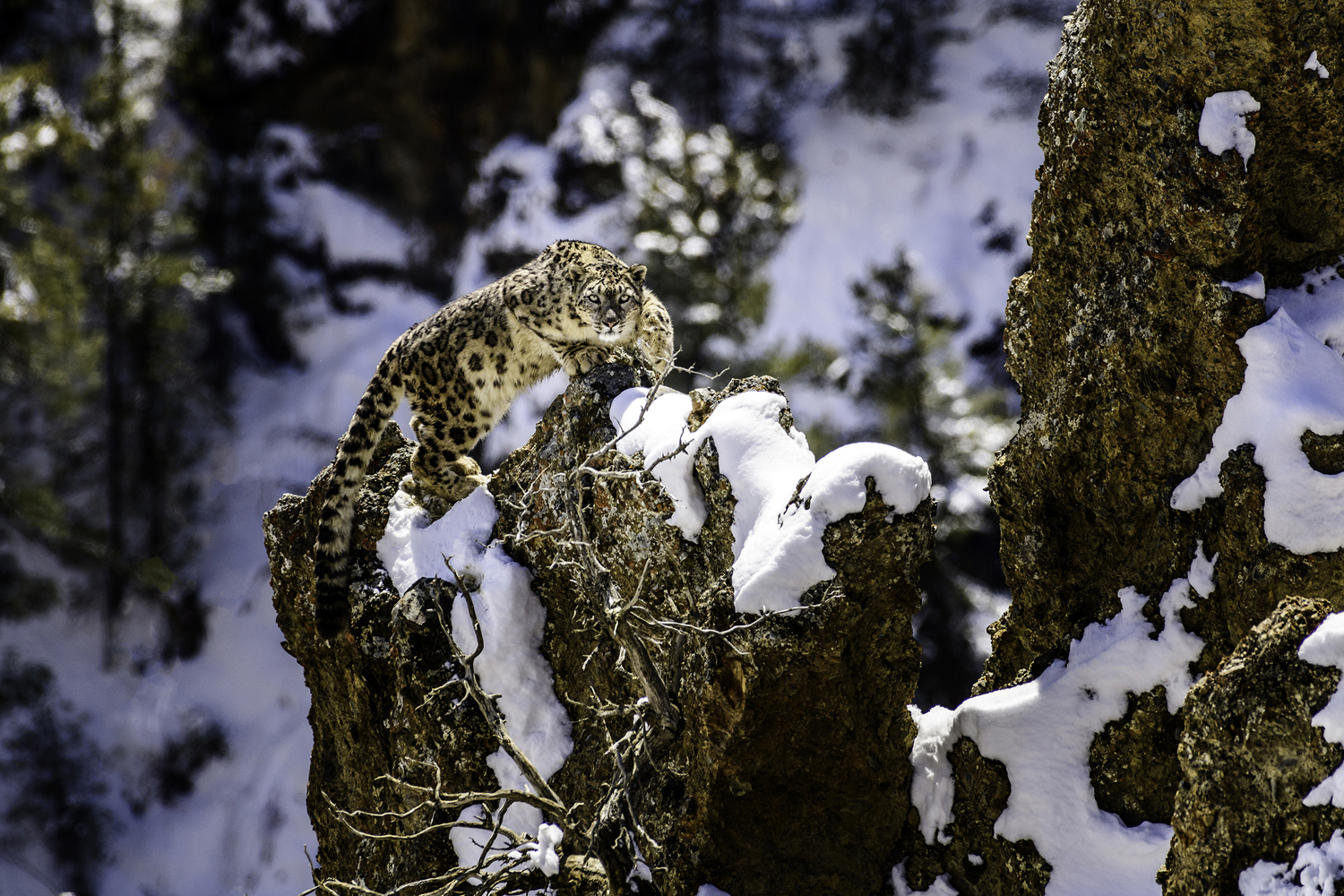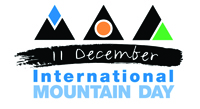Snow leopard redux
Photographer Tashi R Ghale's exhibition of the elusive cat in its melting Himalayan habitat
Brown eyes meet green eyes in the icy crags of Upper-Manang. Tashi R Ghale is camouflaged like a commando, and keeps perfectly still, just 4m from the mother snow leopard and her two cubs as they feast on a Himalayan thar.
Ghale knows that even though snow leopards are shy creatures and do not attack humans, a provoked mother can defend her cubs. Imperceptibly, he raises his camera and takes a burst of shots, the clicks muffled by the wind and din of Griffon vultures wheeling overhead.
Growing up in Manang, Ghale found it difficult to discern the panje (as snow leopards are known in his mother tongue)because their spotted pelt blended so well with the cliffs they climbed.

It is still difficult to catch a glimpse of the endangered Himalayan big cats, but Ghale has since trained himself to track them. He has had close encounters at least 30 times since first photographing them in 2006 and this has earned him the moniker, Snow Leopard Whisperer.

“I know the terrain in Manang like the back of my hand,” says Ghale, showing us around his exhibition, ‘Melting Paradise’ that uses his photographs of snow leopards over the years to highlight how climate change is impacting the Himalayan habitat.
In Manang, like elsewhere in the Himalaya, the glaciers that drain the north slopes of the Annapurnas are shrinking and the snowline is receding. The Gangapurna glacial lake was expanding until it got swallowed up in sediment after a flood last year -- also depicted in Ghale's photographs.
Snow leopard photography got some bad press recently with photoshopped images by an American trekker ostensibly taken in the Everest region.
But genuine Nepali field biologists like Tashi R Ghale know how difficult it is to get a good shot, and the reward in terms of personal fulfilment.
The careful patience of a wildlife photographer shows through Ghale’s work. In Lone Tree II he combines six shots to create an expansive panorama that immerses the viewers in the wilderness habitat of the snow leopard.



Ujen Norbu Gurung, the curator of Windhorse Gallery that is exhibiting ‘Melting Paradise’ says he immediately recognised the importance of Ghale’s work: “To talk is one thing, but to show is another. Tashi’s exhibit does just that.”
The exhibition includes photographs of snow leopard prey from Dolpo and Humla as well as the predator in the wilds of Manang and Mustang.
The Snow Leopard (Panthera uncia) is in the IUCN’s global Endangered C1 red list with only 300 to 500 left in the wild in Nepal. Globally, there may be up to 7,000 left, but these populations are threatened by poaching and habitat decline due to climate change.



“Being the top predator, the snow leopard is an indicator species of the health of the Himalayan ecosystem,” says Ghale, and that is the biologist in him speaking.
With global warming, he says, the tree line is creeping up the mountains, and this means the snow leopard habitat is slowly being encroached upon by competing common leopards of the lower valleys. Human disturbance with new roads and settlements are also driving away the snow leopard.
“A snow leopard is needed for every 150 blue sheep to cull their wild population and reduce pressure on the grasslands,” explains Ghale. A decline in snow leopard population will also affect Himalayan vultures which clean up the carcass that the cats leave behind.


Tashi Ghale and his team employed his award-winning camera-trapping techniques to conduct a census of predators and prey, as well as employ a team of observers to calculate the population in blocks. Ghale reckons there are approximately 2,200 blue sheep in Manang alone. Snow leopards are studied most intensively in Nepal and there are signs cat numbers are increasing in some pockets despite the threats.
Besides snow leopards, Ghale’s camera traps have led him to discover new and lost Himalayan species like the Pallas Cat and the Himalayan Grey Wolf of which there are said to be only 50 remaining in Nepal. In fact, the Pallas Cat has been renamed Tashi Cat to honour his discovery. Ghale founded the Third Pole Conservancy and has contributed to the Destination Manang eco-tourism campaign.
Tashi Ghale's father had taught him to fear the panje, which would often kill livestock and leave paw prints near the family home. Today, rather than fear the animal, Ghale is in awe of them.
He teaches secondary students in Manang to set up camera traps and recognise snow leopard droppings. He says: “Just like we have distinctive fingerprints, snow leopards have individual spots. Recognising individual snow leopards is the first step in co-existing with them.”




